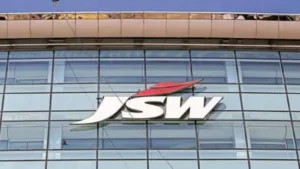Thanks to its soaring shares this year, IDFC First Bank has joined the elite club of the 10 most valuable listed lenders in India, replacing Union Bank of India and Canara Bank with a valuation price is 65,325 Rs crore on 4th September.
According to BSE data, Union Bank of India has a market capitalization (MCap) of Rs 65,251 crore, while Canara Bank is worth Rs 61,081.77 crore. HDFC Bank tops the league as the most profitable bank in India with a market capitalization of Rs 12 lakh crore, followed by ICICI Bank with Rs 6,77 lakh crore and State Bank of India. Degrees, administered by the state, are at Rs 5.14 lakh. Kotak Mahindra Bank is in fourth place, followed by Axis Bank, IndusInd Bank, Baroda Bank, IDBI Bank and Punjab National Bank. Shares of IDFC First Bank hit a record high of Rs 98.99 per share, continuing to rally for the fourth consecutive session on September 4. With a 67% year-to-date increase, it leads all listed banks, both private and public. The bullish trade in IDFC Bank stock stemming from an impending merger with IDFC and its entry into the MSCI Global Standards Index on September 1, analysts say, could yield a boost. investment from 170 million to 180 million USD.
On September 4, the stock jumped more than 5% after Rajiv Jain of GQG bought 17.1 crore shares or 2.58% shares from the lender for around Rs 1,527 crore. While many investors are enthusiastic, some analysts are keeping a close eye on the bank’s performance. Despite the good results in a variety of indicators, the sustainability of this dynamic still arouses some curiosity. CEO Vaidyanathan, who previously emphasized growth, seems to be moving towards a more balanced approach between growth and profitability, analysts say.
IDFC First Bank boasts a high Net Margin (NIM) and demonstrates strong growth. Despite the market’s difficulties, the bank maintained a good performance in terms of asset quality, even as return on assets (RoA) and return on equity (RoE) declined. affected by a high cost/income ratio. The lender reported net interest income up nearly 36% year over year in the June quarter, while other income rose 49%. The company’s net profit increased more than 61%, while provisions increased 55% from a year ago. Operating costs increased by 37%.
The bank’s RoA and RoE improved to 1.25% and 11.78% from 0.97% and 8.96% respectively. Its expense-to-earnings ratio was 71% in the June quarter and has remained high for more than two years.
Rising operating and provisioning costs have raised concerns among investors about the bank’s ability to reward. The positive sentiment in the banking sector depends on expected improvements in return on equity and return on assets, analysts said.
The bank’s management remains confident in its ability to achieve further growth in its loan portfolio while continuously improving asset quality. Positive signs of this progress have been seen over the past four quarters. Analysts expect the bank’s expense-to-earnings ratio to start falling to 55% next quarter.
“We appreciate the management’s approach to issues and opportunities and their excellent execution in line with the announced plan. We believe the stock will continue to deliver. strong performance in the coming period based on the size of the opportunity and its performance history,” the analysts said, declining to do so. to determine. Lenders reported a 25% increase in advances from a year ago, while deposits increased by 44%. The bank’s advance growth rate ranks third among all listed banks, while its deposit growth rate is the most significant among listed banks. The lender’s CASA ratio stands at 46.47%, which is higher than that of the biggest lenders like State Bank of India, Axis Bank, HDFC Bank and ICICI Bank.
Analysts noted a significant improvement in the lender’s retail business, with a positive ROA of around 1.15% in FY23, compared to a negative number in FY22 and 21. They also noticed an improvement in property quality in terms of customer quality at that time. participate and over time, thereby building confidence in the long-term trend of low-cost credit. Further insights into the business, employee and government or PSU segments reveal momentum in the public sector. This needs to be reinforced, analysts say, as the bank now has the necessary track record in profitability.
“We admire the rather detailed information on the bank’s asset quality, new business and expense/income ratio by division, but we appreciate the more specific details. about ‘other costs’ in operating and second level management…We are updating our model for annual figures and providing estimates for fiscal year 26. In the environment where systemic NIM or RoA is peaking and growth is likely to be moderate, IDFC First Bank seems to be in a better position thanks to a clear vision of overall stable NIM and improved RoA, as well as one of the highest growth prospects. As a result, we expect the bank to achieve one of the best CAGR PAT (under 25%) of its peers in fiscal year 23-25,” ICICI Securities said in a note.
ICICI Securities maintains an “extra” rating on the stock with a target price of Rs 105 per share, valuing the stock at 2.2 times its adjusted book value estimate as of March 2025.





